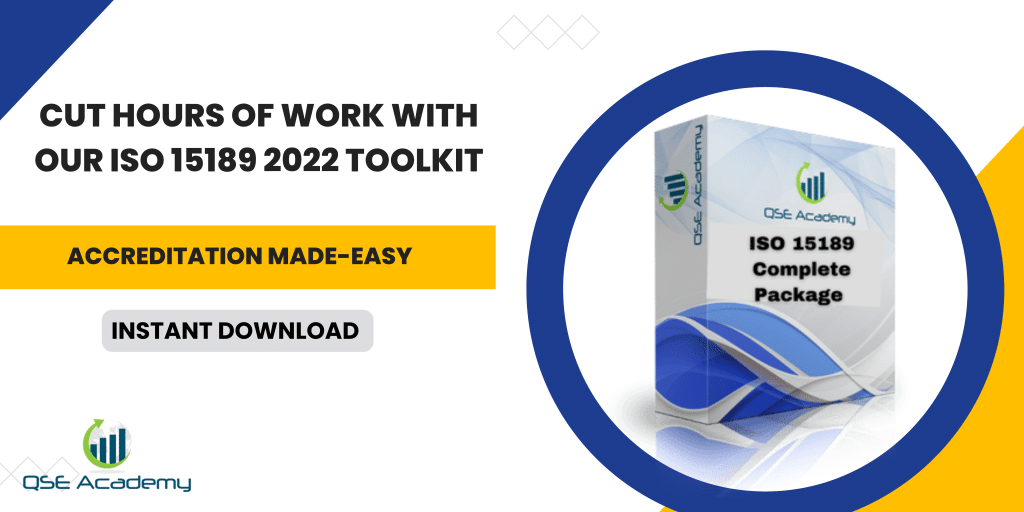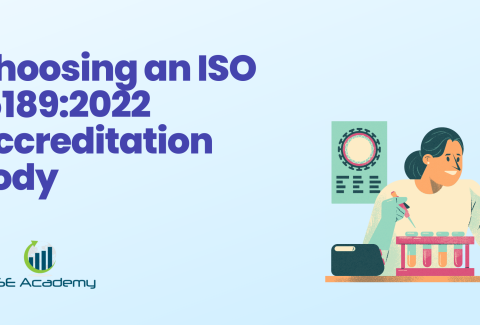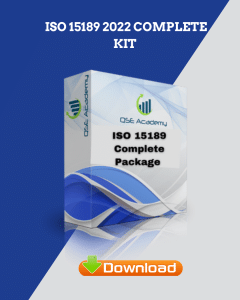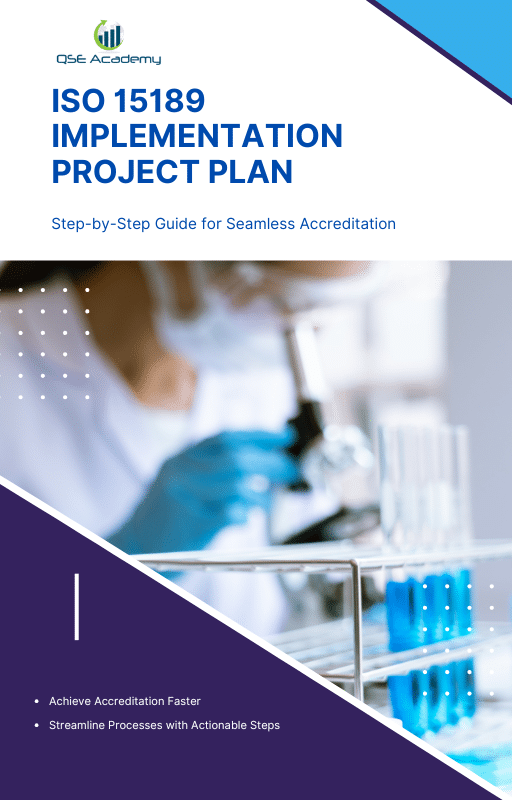ISO 15189:2022 Audit‑Duration Man‑Day Calculator
Last Updated on October 22, 2025 by Hafsa J.
Why Audit Duration Matters in ISO 15189:2022 Accreditation
When labs start preparing for ISO 15189 accreditation, one of the first questions they ask is, “How long will the audit take?” It’s a fair question — audit duration directly impacts your team’s workload, scheduling, and even total cost.
In my experience working with laboratories of all sizes, most underestimate the time assessors need to review documentation, interview staff, and verify technical competence. The result? Tight schedules, staff burnout, and sometimes, delayed accreditation.
That’s where understanding man-days becomes critical. This article breaks down what a man-day actually means in ISO 15189 audits, how accreditation bodies calculate audit duration, and how you can estimate your own timeline accurately using a simple, logical approach.
Now that we’ve set the stage, let’s clarify what “man-day” really means — because it’s more specific than most people realize.
What Is a Man-Day in ISO 15189:2022 Audits?
Before you can estimate how long your ISO 15189 assessment will take, you need to understand what accreditation bodies mean by a man-day.
In simple terms, one man-day equals one assessor working for one full day. So, if your audit team includes two assessors for two days, that’s four man-days total. It’s the core unit accreditation bodies use to calculate audit duration and pricing.
But not all man-days are the same. Accreditation bodies typically divide them into three types:
-
Document review man-days – Time spent reviewing your manuals, records, and validation data before the visit.
-
On-site man-days – The actual time assessors spend in your lab observing, interviewing staff, and verifying tests.
-
Remote or hybrid man-days – Time spent assessing parts of your system online (for example, reviewing digital QMS records).
Here’s why this matters: the mix of on-site and off-site man-days changes your total duration — and your costs.
Pro Tip: Ask your accreditation body how they split man-days between remote and on-site work. Labs that manage digital systems well can often reduce travel-related time and save both days and money.
Now that you know what a man-day is, let’s look at what actually determines how many of them your lab will need.
Factors That Determine Audit Duration
Every lab is unique, which means no two ISO 15189 audits take exactly the same amount of time. Accreditation bodies calculate audit duration based on how complex your operation is — not just how big it looks on paper.
Here’s what really drives the number of man-days assigned to your audit:
-
Number of staff and departments. More people means more interviews, training records, and competence evaluations for assessors to review.
-
Scope of testing. Each additional discipline — microbiology, hematology, molecular diagnostics — adds methods to be verified.
-
Number of sites. If your collection centers or testing facilities are spread out, expect extra days for travel and sampling.
-
Accreditation history. First-time applicants usually get more assessor time than labs renewing accreditation.
-
Complexity of tests. Specialized or high-risk procedures often require technical assessors with niche expertise, which extends the audit.
Here’s what I’ve seen time and again: labs often underestimate how much coordination multi-site or multi-discipline audits demand. Even a well-organized lab can lose a day if sample flow or documentation access isn’t planned.
Pro Tip: Combine similar tests or methods under shared validation summaries when possible. It keeps your scope clear and can shave half a day off your total audit time.
Now that you understand the factors, let’s look at some realistic man-day ranges for different lab sizes.
Typical Man-Day Ranges for Different Lab Sizes
Every accreditation body has its own way of estimating man-days, but after reviewing dozens of quotations across different regions, I’ve noticed some consistent patterns. Your lab’s size, staff count, and scope of testing are the main drivers behind how long the audit lasts.
Here’s a practical reference table you can use as a starting point:
| Lab Type | Staff Count | Approx. Man-Days | Notes |
|---|---|---|---|
| Small Lab | 1–10 | 2–3 | Focused scope, single site |
| Medium Lab | 11–30 | 4–6 | Broader scope, may include multiple departments |
| Large Lab | 31–100+ | 7–10+ | Multi-site, complex scope, or specialized testing |
These numbers usually include both on-site and document-review time.
For example, a regional hospital lab with around 25 staff and four testing areas (hematology, chemistry, microbiology, and transfusion) might require five man-days — three on-site for the technical review and two off-site for documentation and data checks.
Pro Tip: Don’t assume a larger lab always means a longer audit. Accreditation bodies often assign additional assessors to split responsibilities, keeping the duration reasonable while maintaining depth.
Now that we’ve covered what’s typical, let’s move on to how you can calculate your own man-day estimate with a simple, practical formula.
Using the ISO 15189 Man-Day Calculator
Once you understand how accreditation bodies think about audit duration, you can estimate it yourself with a simple approach. You don’t need fancy software to get a realistic figure—just the right inputs.
Here’s a straightforward formula you can use:
Base Man-Days + (0.5 × Each Additional Department) + (0.2 × Each Remote Site)
Let’s say you run a mid-sized diagnostic lab with:
-
A base of 3 man-days for document review and assessment
-
4 departments (hematology, chemistry, microbiology, and serology)
-
1 remote collection center
Using the formula:
3 + (0.5 × 3) + (0.2 × 1) = 4.7 man-days (round up to 5)
That means you can expect roughly five man-days of assessment effort. Depending on the accreditation body, those may be split as 2 days off-site and 3 on-site.
Pro Tip: Always round up rather than down. It’s better to block an extra day for assessors than to rush them—and rushing leads to missed details and potential follow-ups (which cost more later).
In my experience, labs that plan one extra buffer day rarely regret it. It gives everyone breathing room and keeps the audit professional rather than pressured.
Now, let’s go over a few practical ways to optimize audit duration without compromising quality or compliance.
How to Optimize Audit Duration Without Cutting Corners
If you’re looking to shorten your ISO 15189 audit time, here’s the truth — you can’t skip steps, but you can make the process smoother and more efficient. Most labs waste man-days not because of complexity, but because of disorganization.
Here’s what actually helps:
-
Stay audit-ready year-round.
Keep your quality records, training files, and equipment logs current. If assessors spend less time searching for evidence, your audit flows faster. -
Run an internal pre-assessment.
A dry run helps spot gaps before the official visit. Fixing them early can save at least half a day of assessor time during the real audit. -
Go digital where possible.
Using an electronic QMS or document-control system allows assessors to review remotely, cutting down on travel and idle time. -
Submit documentation in advance.
When assessors can review validation data or calibration certificates beforehand, they’ll need fewer on-site hours.
Case Insight:
A private diagnostic lab I supported used to spend seven man-days on initial accreditation. By implementing a digital document system and standardizing internal forms, they trimmed it down to five — without losing quality.
Pro Tip: Efficiency doesn’t mean rushing. It means being organized enough that assessors can focus on verification, not hunting for missing files.
Next, let’s see why man-day estimates differ between accreditation bodies, even for the same kind of lab.
How to Optimize Audit Duration Without Cutting Corners
If you’re looking to shorten your ISO 15189 audit time, here’s the truth — you can’t skip steps, but you can make the process smoother and more efficient. Most labs waste man-days not because of complexity, but because of disorganization.
Here’s what actually helps:
-
Stay audit-ready year-round.
Keep your quality records, training files, and equipment logs current. If assessors spend less time searching for evidence, your audit flows faster. -
Run an internal pre-assessment.
A dry run helps spot gaps before the official visit. Fixing them early can save at least half a day of assessor time during the real audit. -
Go digital where possible.
Using an electronic QMS or document-control system allows assessors to review remotely, cutting down on travel and idle time. -
Submit documentation in advance.
When assessors can review validation data or calibration certificates beforehand, they’ll need fewer on-site hours.
Case Insight:
A private diagnostic lab I supported used to spend seven man-days on initial accreditation. By implementing a digital document system and standardizing internal forms, they trimmed it down to five — without losing quality.
Pro Tip: Efficiency doesn’t mean rushing. It means being organized enough that assessors can focus on verification, not hunting for missing files.
Next, let’s see why man-day estimates differ between accreditation bodies, even for the same kind of lab.
FAQs – ISO 15189:2022 Audit Duration & Man-Days
1. How long does a typical ISO 15189 audit take?
Most labs can expect anywhere from 2 to 10 man-days, depending on their size, scope, and number of sites. A small private lab might only need two assessors for two days, while a large hospital network could require a team over several weeks (split into on-site and off-site work).
2. Can renewal audits be shorter than initial accreditation?
Yes. Renewal or surveillance audits usually take fewer man-days — often 30–40% less — since assessors already know your system. If your lab maintains consistent compliance and strong internal audits, they’ll spend less time verifying documents and more time confirming ongoing performance.
3. Do remote or hybrid audits reduce man-days?
Not always, but they often make the process smoother. Remote reviews don’t always cut total man-days, but they reduce travel costs and make scheduling more flexible. Some accreditation bodies allow partial remote assessments, especially for document reviews or staff interviews.
4. What’s the fastest way to estimate man-days before applying?
Use a baseline formula or calculator that factors in staff count, departments, and sites. Then validate it with your chosen accreditation body. A clear, documented estimate shows professionalism — and often helps you get a faster, more accurate quote.
Now that your main questions are answered, let’s wrap up with the key takeaway — how understanding man-days helps you plan smarter and manage audits more confidently.
Estimate Smart, Prepare Early
ISO 15189:2022 accreditation isn’t just about passing an audit — it’s about managing time, people, and preparation. Understanding how man-days are calculated gives you control over the entire process. You’ll know how long assessors will be on-site, when to free up your staff, and how to budget realistically.
In my experience, labs that take the time to calculate and plan their audit duration early rarely face delays. They’re organized, confident, and ready — not scrambling to gather evidence the week before assessors arrive.
The takeaway is simple: clarity saves time and money. Use a reliable man-day calculator, verify your assumptions with your accreditation body, and build a few buffer hours into your plan. That extra margin can turn a stressful audit into a smooth, professional experience.
If you’d like to make the process easier, try our ISO 15189 Audit-Duration Calculator Template — designed to help you estimate man-days accurately and plan your audit timeline step by step.
Because when you prepare smart, the audit stops being a guessing game — and becomes a predictable, well-managed milestone in your lab’s quality journey.
Whether it’s ISO 9001, ISO 22000, or the cosmetics-focused ISO 22716, I’ve spent my career I’m not here to call myself an expert—I prefer “enthusiast” because I truly love what I do. When I’m not writing about standards, you’ll probably find me playing Piano 🎹, connecting with people, or diving into my next big project💫. I’m an engineer specialized in the food and agricultural industry
make ISO standards less intimidating and more approachable for everyone.
turning complex jargon into clear, actionable steps that businesses can actually use.
There’s something incredibly rewarding about helping people navigate food safety and quality management systems
in a way that feels simple, practical, and even enjoyable.
I have a Master’s in QHSE management and over 12 years of experience as a Quality Manager
I’ve helped more than 15 companies implement ISO 9001, ISO 22000, ISO 22716, GMP, and other standards
My clients include food producers, cosmetics manufacturers, laboratories, and service companies
I believe quality systems should be simple, useful, and efficient.













